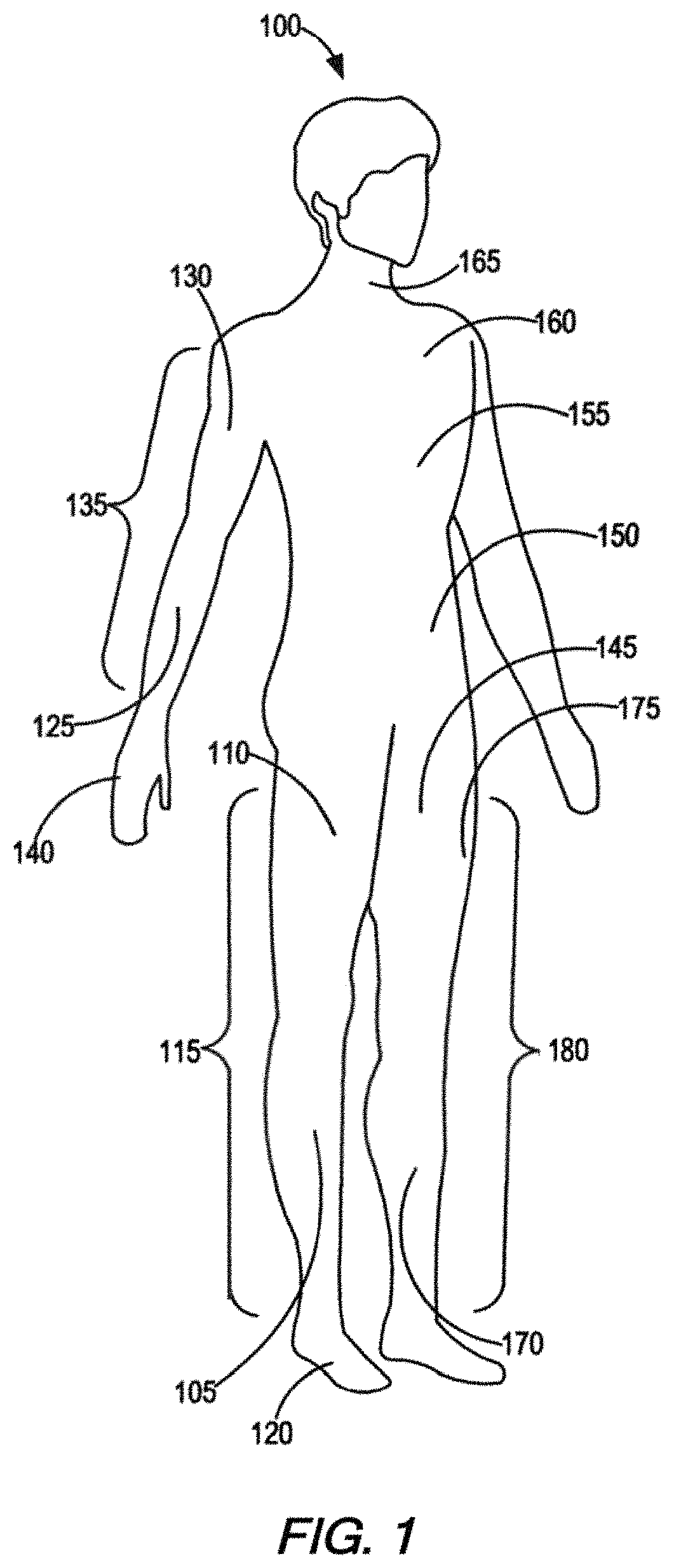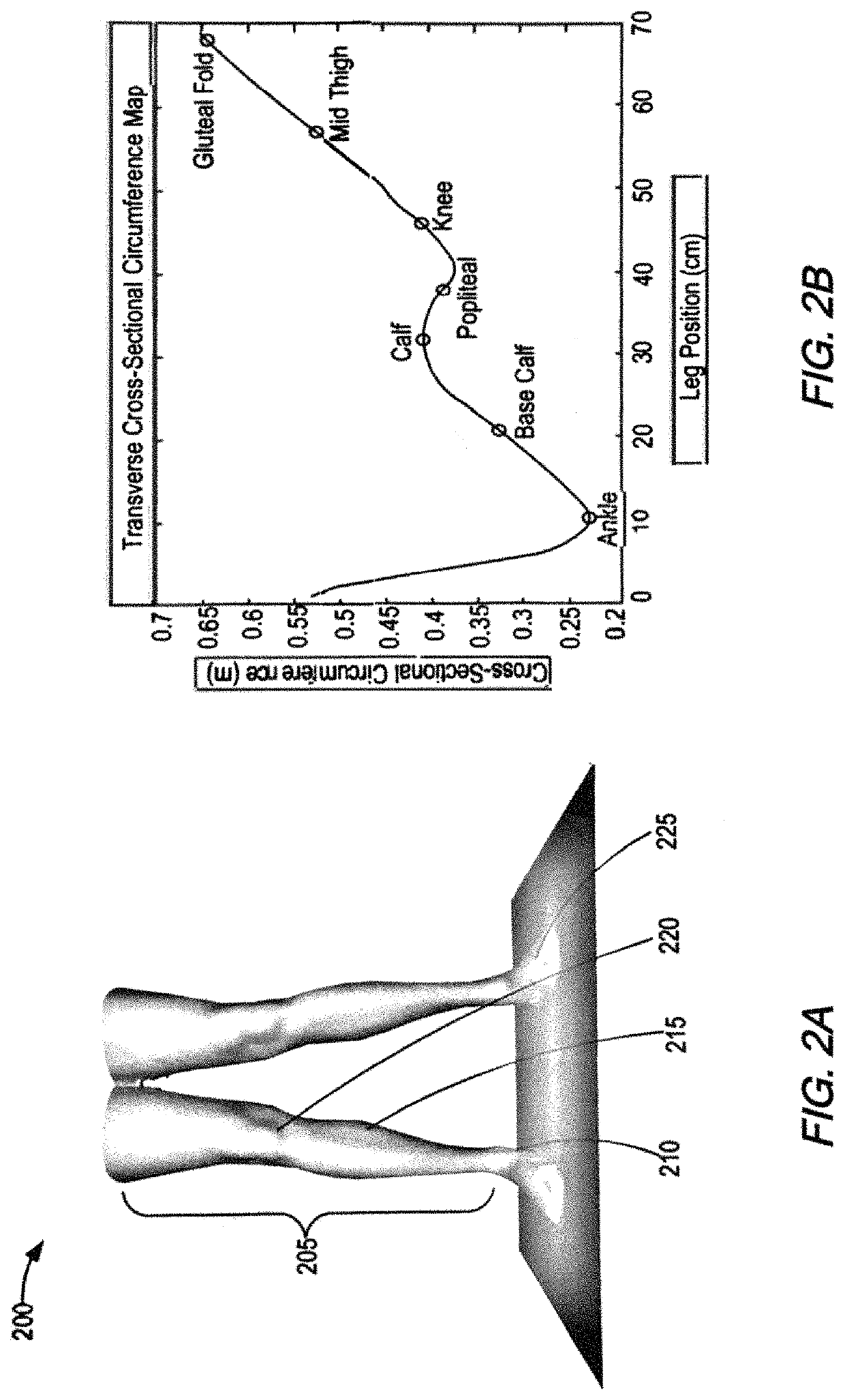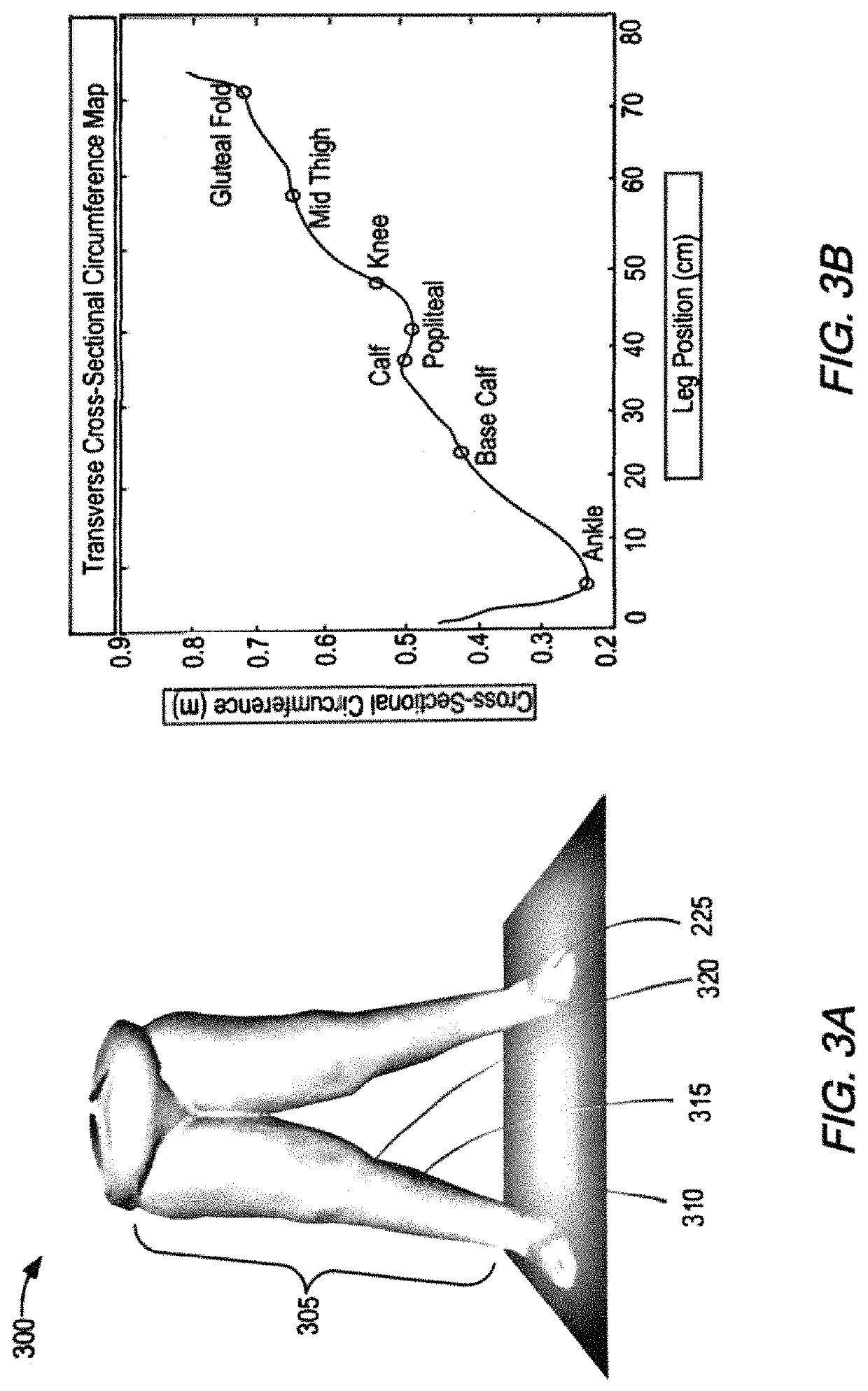Methods and systems for identifying body part or body area anatomical landmarks from digital imagery for the fitting of compression garments for a person in need thereof
a technology of digital imagery and anatomical landmarks, applied in the field of systems and methods to generate anthropometric information on a body part or body area from digital images, can solve the problems of reducing affecting the quality of life of the patient, and unable to achieve the intended function
- Summary
- Abstract
- Description
- Claims
- Application Information
AI Technical Summary
Benefits of technology
Problems solved by technology
Method used
Image
Examples
Embodiment Construction
[0031]In the following detailed description, reference is made to the accompanying drawings, which form a part hereof, and within which are shown by way of illustration certain embodiments by which the subject matter of this disclosure may be practiced. It is to be understood that other embodiments may be utilized, and structural changes may be made without departing from the scope of the disclosure. In other words, illustrative embodiments and aspects are described below. But it will of course be appreciated that in the development of any such actual embodiment, numerous implementation-specific decisions must be made to achieve the developers' specific goals, such as compliance with system-related and business-related constraints, which may vary from one implementation to another. Moreover, it will be appreciated that such development effort might be complex and time-consuming but would nevertheless be a routine undertaking for those of ordinary skill in the art having the benefit ...
PUM
 Login to View More
Login to View More Abstract
Description
Claims
Application Information
 Login to View More
Login to View More - R&D
- Intellectual Property
- Life Sciences
- Materials
- Tech Scout
- Unparalleled Data Quality
- Higher Quality Content
- 60% Fewer Hallucinations
Browse by: Latest US Patents, China's latest patents, Technical Efficacy Thesaurus, Application Domain, Technology Topic, Popular Technical Reports.
© 2025 PatSnap. All rights reserved.Legal|Privacy policy|Modern Slavery Act Transparency Statement|Sitemap|About US| Contact US: help@patsnap.com



